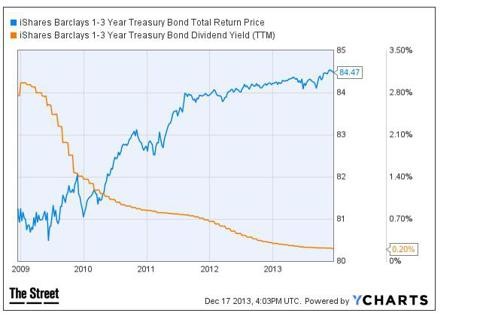Dividend ETF Party Getting Pretty Crowded
Post on: 1 Апрель, 2015 No Comment

Follow Comments Following Comments Unfollow Comments
With investors feverishly searching for yield in any form, ETF issuers are filling the proverbial punch bowl with all manner of equity income strategies, and it seems the cup will soon runneth over.
A week after WisdomTree, the de facto dividend-focused ETF firm, announced it was putting two new dividend ETFs into registration—one focused on the broad market and the other on small-cap firms—Global X launched another high-dividend-yield strategy, this one with a low-volatility overlay.
The fact that the Global X SuperDividend U.S. ETF (DIV) provides an intersection of perhaps the two most popular equity ETF strategies—low volatility and dividend yield—highlights the feverish race to provide a better dividend mousetrap.
There are now, by our count, 50 different ETFs that use dividends as their initial screening criteria. The focus of these funds varies greatly, from emerging markets to global real estate. Investors have poured more than $69 billion into these products, with much of that asset base coming in the past three years, a function no doubt related to growing concern that bond investors are quite likely about to face capital losses as the extraordinary period of easy money and low rates morphs into a new era of inflation.
The two Wisdom Tree products—the WisdomTree U.S. Dividend Growth Fund and the WisdomTree U.S. Small Cap Dividend Growth Fund—attempt to target sustainable dividend streams as opposed to firms with temporarily high dividend yields. In order to do so, WisdomTree selects and weights 300 stocks in each portfolio that meet stringent long-term earnings growth expectations like return on equity and return on assets in addition to projected payout growth.
The aim of this process is to produce a portfolio of companies with sustainable dividend yields that are most likely to grow in the future. This is an admirable endeavor to be sure, but not necessarily all that different from competing ETFs like Vanguard’s Dividend Appreciation ETF (VIG), the SPDR S&P Dividend ETF (SDY) and the iShares Dow Jones Select Dividend (DVY).
Special Offer: Forbes Dividend Investor newsletter’s 152 dividend stock picks are up 13.8% since July 11 vs. 9.2% for the S&P 500. Average yield is 5.7%. Click here for a free-trial membership.
While the nuances and breadth of the WisdomTree portfolios are in fact unique, they speak to a trend in the ETF industry of issuers attempting to one-up each other in competing for assets in a very popular segment of the market.
The Global X product, DIV, is a perfect example of this. Back in October, PowerShares announced the launch of a fund similar to DIV, though a bit narrower in focus: the PowerShares S&P 500 High Dividend Portfolio (SPHD). Both products aim to marry the popular low-volatility strategy with the similarly popular high-yield equity strategy.
This “me-too” style offering has become a hallmark of the ETF market in recent years, as issuers have launched products targeting the same seemingly narrow slices of the market.
MLPs, which, by the way, are eligible for inclusion in DIV, are another perfect example of this. There are now more than 13 MLP ETPs on the market, with very little differentiation beyond weighting and selection strategies. Investors have flooded the MLP ETP market to the point where this once-overlooked section of the tax code is now home to more than $10 billion in ETP-linked assets.

While this may not be a dangerous game for issuers, it can be a challenge for investors buying these funds, as they tend to become victims of their own success. Because there is so much money flowing into dividend funds, the yields you would otherwise get from holding the underlying securities in proportion to their weighting in these funds is often dampened by the inflows themselves.
Mechanically, this concept may be foreign to new users of the ETF wrapper. When new assets come into an ETF that throws off a hefty yield, the dividends paid by the underlying companies must be spread over more investors.
Because companies don’t pay dividends every day—but rather quarterly, and in rare cases monthly—in the time between when the dividend is paid and when the ETF itself distributes its dividends, the investor base will often expand. This means the yield you realize can be less—sometimes significantly less—than the dividend yield you’d expect given the yield of the underlying portfolio.
Take the iShares High Dividend Equity ETF (HDV). The fund saw net inflows of $1 billion over the past year, and its realized yield of 3.25 percent was more than 50 basis points less than its 3.79 percent indicative yield would have had you believe.
Of course, the opposite holds true as well: If an ETF shows big outflows, the dividend yield can be higher than the indicative yield.
The problem is that the high-dividend-yield space has seen consistently high net inflows over the past year and investors have paid the price of that popularity. If the popularity and subsequent issuance of new high-dividend-yield strategies continue apace, investors are likely to suffer, regardless of whether the market continues to march ahead.














